With an innate sense of political rights and wrongs and a deep empathy for humanity, Julie Peppito creates sculptures, collages, drawings, quilts and tapestries to depict a narrative, an idea, or to make social or political comments
Julie seamlessly integrates plastic litter, objects from nature and collected items along with drawn and painted imagery into her works. She arranges and rearranges her composition until she is happy with the results, and then sews it together, adding stitched, repetitive patterns and paint to finish her work. The collaged, conjoined nature of her work is symbolic of our interconnections with each other and to our planet.
After a huge knock to her confidence at college, when her work was derided by people lacking an understanding of the concept of textile art, she gained strength from a professor’s positive response. She began to assert herself, moved to a more supportive environment and has gone on to develop an important body of work during her career.
Julie received a Bachelor of Fine Arts in 1992 and a Master of Fine Arts in 2004. In 2001, she received a New York Foundation for the Arts (NYFA) Fellowship for sculpture. She has produced seven one-woman shows and has shown her work in many joint exhibitions.
She recently co-curated an exhibition at the Robert Mann Gallery in Manhattan, with Orly Cogan, called “In Her Hands”. The exhibit featured fifteen portraits of women running in the 2018 US state and national elections. The portraits were made by fifteen women artists using techniques traditionally associated with women.
During 2018, Julie has also exhibited, “Nature, Fashion & War”, a one-woman-show at Living Arts, a non-profit art gallery in Tulsa, Oklahoma. For this she used a mixture of three-dimensional unconventional large-scale tapestries and larger-than-life, realistic charcoal images of former US Environmental Protection Agency head Scott Pruitt and the infamous “Dark Money” right-wing Koch brothers. She created this work as a comment on the connections between our addiction to material consumerism and the destruction it causes to us and our planet.
In this interview you’ll discover in detail Julie’s interesting work process; she picks up collected items from around her studio while tidying up after her previous project. These items then inspire her next piece of work. She shares how she combines these objects with fabric, stitching, paint and drawings. Julie explains how she would like to become more minimalist in her work, rather than overworking pieces, and then having to dial them back.
She offers advice on how we should determine our own definitions of success. Ms. Peppito also explains that business skills are important in developing a career as an artist.
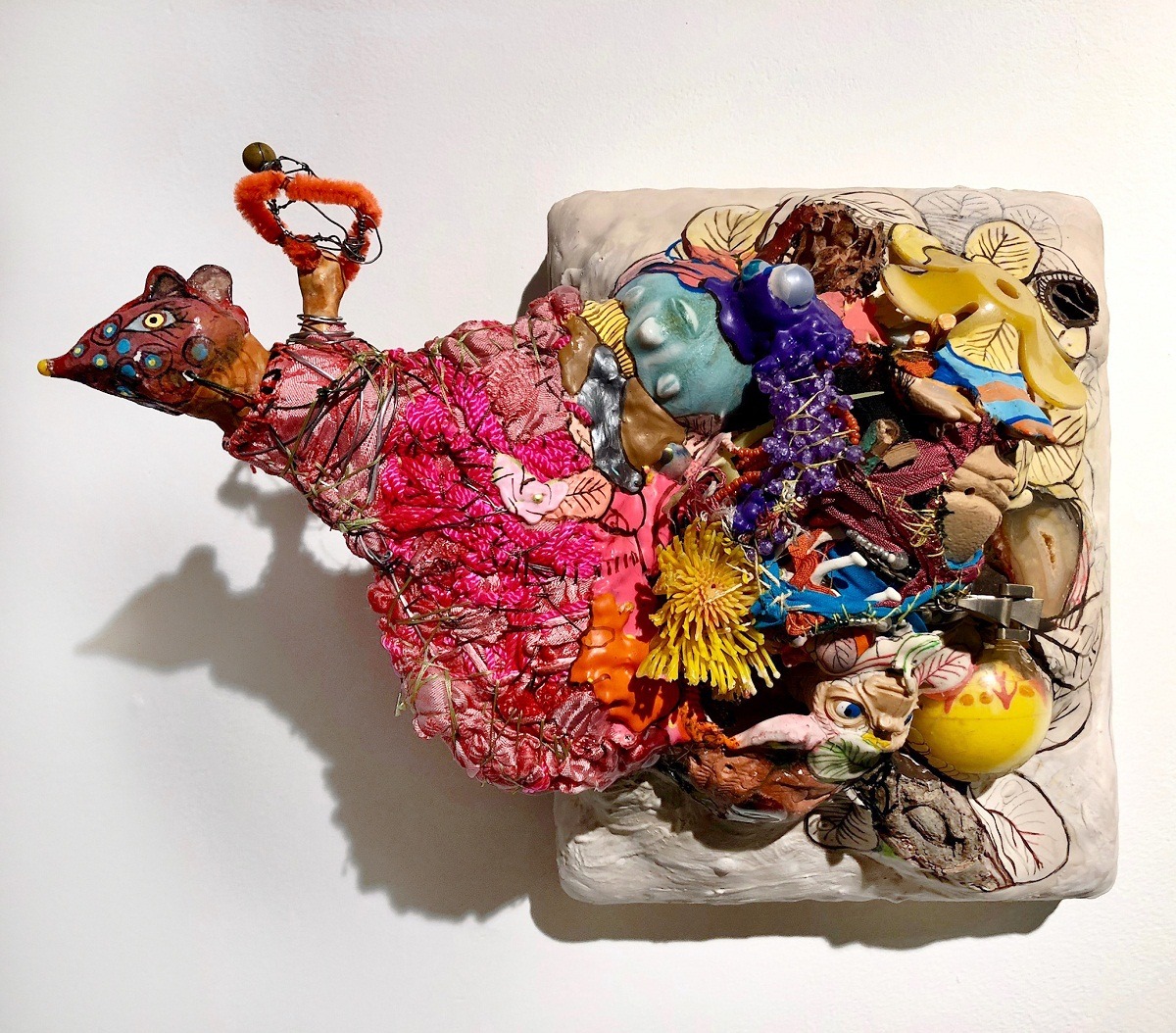
Stitching and political statements
TextileArtist.org: What initially attracted you to textiles as a medium? How was your imagination captured?
Julie Peppito: When I was six my family took a road trip from Tulsa, Oklahoma to Ghost Ranch, New Mexico.
My sisters and I were each given a bag of fabric scraps and buttons. I revelled in spending the whole journey sewing shapes and patterns together. I made tiny bags and compositions.
From then on, I was hooked!
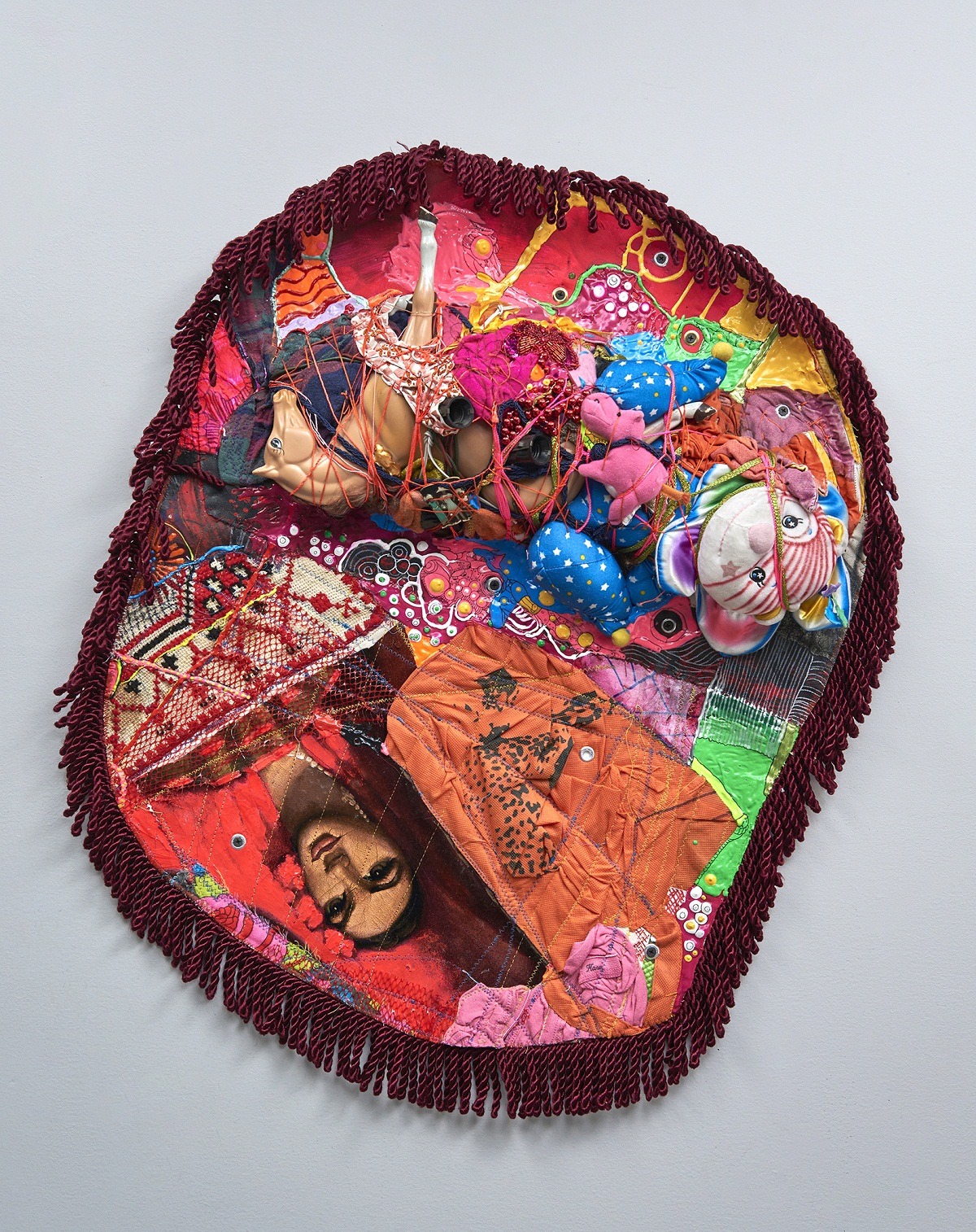
What or who were your early influences and how has your life/upbringing influenced your work?
My mother didn’t know how to sew, but for a birthday gift one year my dad bought her a sewing machine. She was not happy. I was so excited to use that machine though. I spent hours experimenting with it.
Their differences in opinion became the seeds of my feminist and political roots. My dad was a Republican, my mom a Democrat. I marched on the capital for the Equal Rights Amendment with my mom in 1980, when I was ten.
Both of my parents were deeply committed to helping people and treated all people with respect and kindness, regardless of race, religion, class or any other differences. Growing up in this environment had a tremendous impact on my character and my artwork.
I always loved drawing. When I was in primary school I drew a picture in crayon on newsprint. It was a drawing of a turkey that looked remarkably like a turkey. My art teacher entered it in a state-wide competition and it won first place. From then on I was enrolled in every art class my Mom could find.
Both of my parents were Catholic and from New York. They moved to Tulsa, Oklahoma before I was born, in search of the American Dream. This combination of North, South and Catholicism had a huge impact on me.
I rejected Catholicism when I was twelve because I couldn’t understand how all religions could claim to have the answer but yet somehow Catholicism was the one I should follow without question. However, during my Catholic upbringing I learned two main beliefs, both of which all religions hold in common; ‘Love thy neighbour’ and ‘Do unto others as you would have them do unto yourself’.
These guidelines have ultimately become the basis of my political and environmental work. They started me on the road of questioning our values and wondering why we throw out so many things that were once valuable to us.
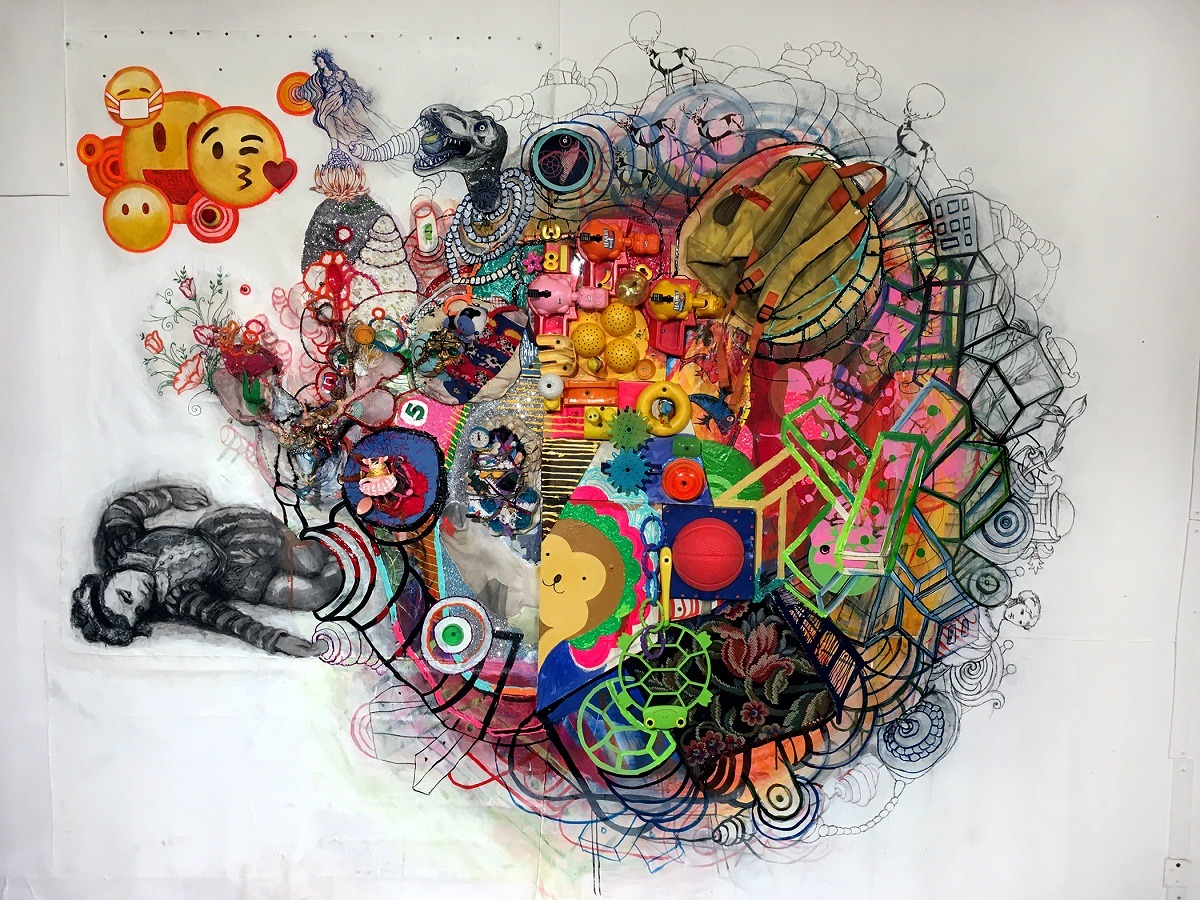
What was your route to becoming an artist?
I spent my youth sewing, drawing, painting and making jewellery. I made sculptures out of anything I could find.
Picasso was the first artist I loved. My mom bought me a book of his paintings after I won my first art competition at primary school. In high school, I had an amazing art teacher who was always entering me into contests and exposing me to new materials and ideas.
A show called “The Eloquent Object” came to Philbrook, one of two of Tulsa’s local art museums. That exhibition was extremely important to me. I saw a piece made of beads, thread, plastic, rocks and magazine images. The artwork was called “The Jonestown Massacre” and was made by the artist Joyce Scott. It blew me away.
I loved Joyce’s use of mixed materials, carefully constructed to drive home an important message. It inspired me to learn about the Jonestown Massacre.
That same year, my art teacher gave us an assignment to make a social or political statement in a piece of artwork. I became very upset when she showed us the work of Jenny Holzer and Barbra Kruger. At the time I hated it (though later, after further analysis, I warmed to their work). Their work seemed cold and boring. It didn’t inspire me and I resented having to include a message in my work when I wasn’t inspired to do so.
The next year I went to Cooper Union in New York City. I had always wanted to go back to NYC and never understood why my parents had left. I always felt like an outsider in Tulsa and thought I would find my people in NYC.
Unfortunately, I struggled my whole time there.
The feedback I got was that I was making “craft” and not “fine art”. I felt even more of an outsider than in Tulsa. My confidence was low. I felt extremely stupid and that people were making fun of me. I was eighteen years old, naïve and I had some experiences that were very cruel.
In the middle of a three-hour critique, a teacher once told me that I should cut up and burn my piece. However, in another of my critiques, a professor stood up for me. A student told me that what I made looked like something they could buy at a street craft fair. The well-known political artist Hans Haacke (the professor leading the critique) asked the student if that meant it wasn’t art. The student said, “Of course it isn’t art.” Haacke asked him “Why?” and that question rendered the student speechless. I’ll never forget that day and my confidence started to grow.
After that experience, I switched from the sculpture department to the painting department. There I was able to make “process-oriented art”, not the hard-edged, conceptual art that seemed to be the only art acceptable in the sculpture department at the time.
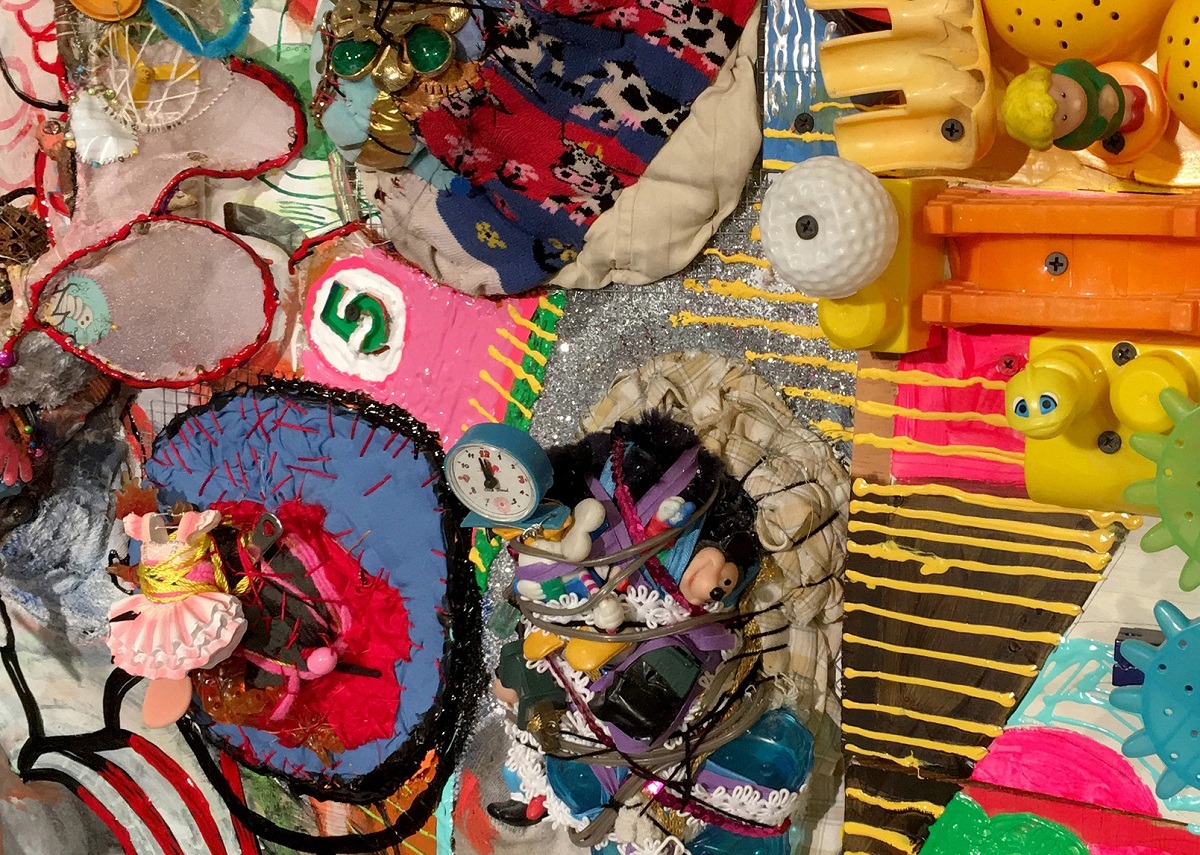
Unearthing inspiration from cluttered collections of junk objects
Tell us about your process from conception to creation
First I spend two days cleaning and sorting out my studio.
I gather the things that I have picked up off the floor, shelves and desk, to inspire me for my next artwork. Almost always my works are a continuation of where the last piece left off.
I’ve collected objects and images for years. I store them all in labelled containers. Sometimes I empty them out again after tidying up and hold objects and images up to find narratives and connections.
Sometimes I’ll be looking through a pile of images, old sketchbooks or art books. I might come across a piece of fine art, pop art, decorative art, some folk art, a crafted item, or something from nature or history that inspires me. I’ll use that as a jumping off point for the narrative, then start looking through objects and fabric for more items to add in.
If I’m making a tapestry I find a large piece of fabric as my base. Maybe an old rug or curtain or a window fabric blind – anything that looks flexible and durable. I start placing objects and images on it. I take pictures of different combinations then look at them and choose my favourite. Then I begin sewing the objects into the piece.
I usually work with the items laid out on a large table but sometimes I start by hanging them on the wall.
I build layers on top using the same process over and over again; place objects, take pictures, sew on items.
I sift through images to find references that move me to draw or paint them. I photocopy and enlarge those images to make it easier to work from them or I project the images onto canvas, paper or gessoed/sanded cardboard to make them really big. I get a basic outline to scale then draw the rest of the image freehand. Then I cut it out and sew it onto the piece I’m making.
I often cut up old drawings or paintings that were unsuccessful as a whole but have tasty bits within. I’ll sew or glue these sections on as collage elements.
At some point, the piece goes on the wall so I can stand back and see it as a whole. Then I use pins to attach more bits and pieces. I photograph the piece again it to see more clearly. I also move constantly from close up to far away to make sure the piece is making an impact from many vantage points.
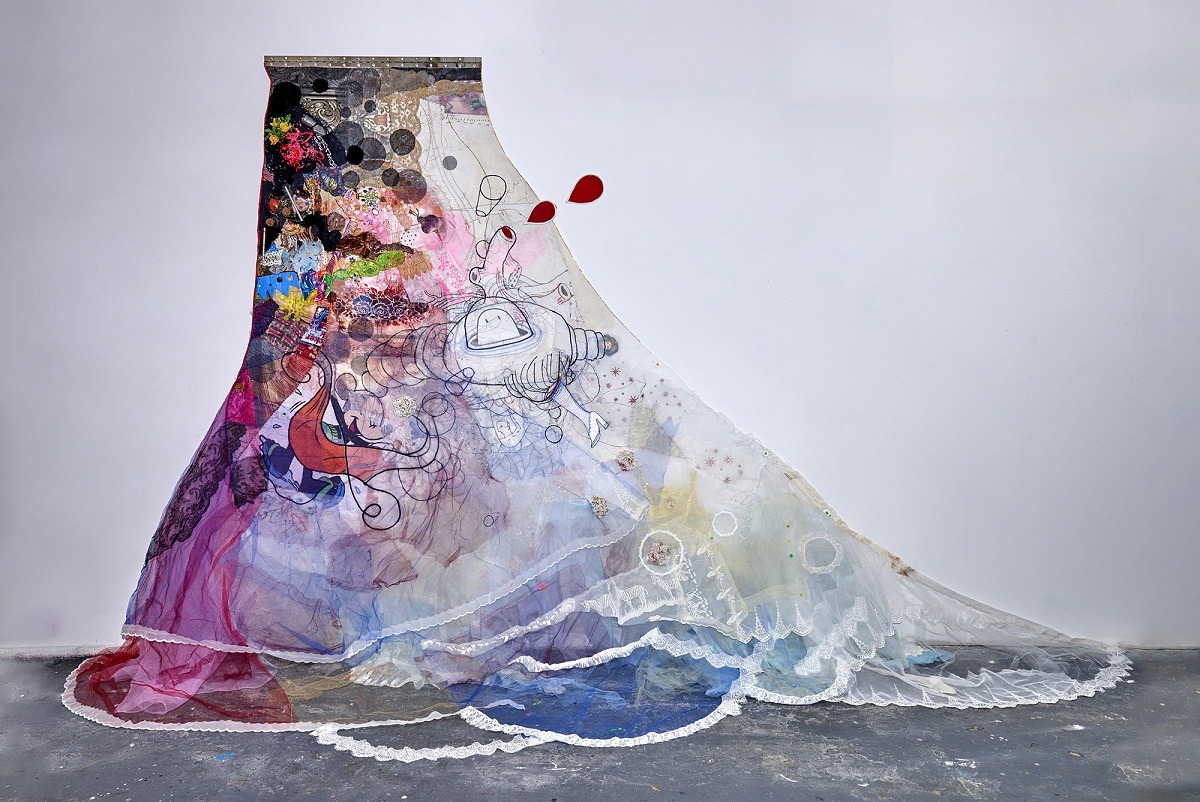
Tell us a bit about your chosen techniques and how you use them
I use my sewing machine as a tool to attach smaller pieces together into swatches and drawing crude lines with thread. I think of these swatches as ‘beads’ to be joined together later on.
I make other kinds of ‘beads’ that are more three-dimensional. I sew fabric, stuffing and collected items (like old toys, shoes or handbags) onto pieces of chicken wire.
Other ‘bead’ components are images painted on canvas, cardboard or paper. They all get tacked to the main piece, photographed and then when I am happy with the combination I hand-sew them or hot glue them to the base material.
It is very important for me to make sure no seams are showing and that all of the objects and images are well integrated into a whole topographical narrative. I use fabric paint and acrylic to add patterns and images over these seams to disguise them.
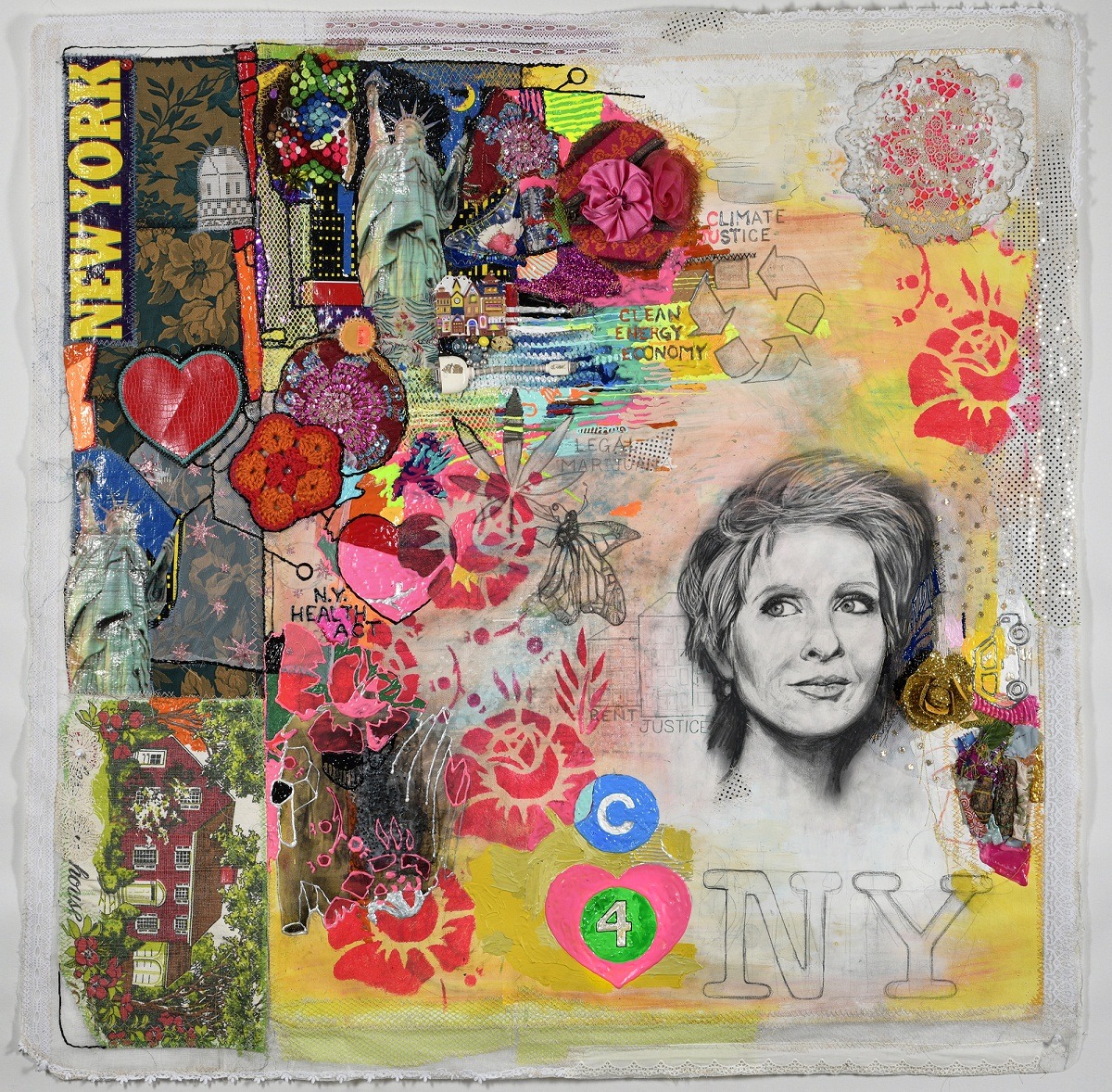
What currently inspires you?
Voting! I realized I was taking it for granted, as most people do.
It is a continuation of a consistent theme in my work where I question why we value things or stop valuing things. I realized that if citizens don’t vote then we are letting other people, who often don’t have our best interests in mind, make decisions for us.
That is why I was excited to co-curate “In Her Hands”, an exhibition to highlight women candidates who emphasize caring for people as part of their platform. I invited artists who work in creative practices traditionally associated with women. Most of the artists in the exhibition use fibre art and needlework. There was also a ceramicist who references lacework.
My most recent piece was included in the exhibition. It was a portrait of Cynthia Nixon to highlight her running for the position of Governor of New York.
I was sad that Cynthia lost, but through learning about her and the other women candidates I realized that she had really won a lot just by going for it. She was able to push Governor Cuomo into committing to more caring policies for people, such as introducing the $15/hour minimum wage.
I am also very inspired by real news. I know several journalists personally who work very hard to investigate and correctly source references for their articles and books. I try to illustrate and shine a light on their work, in my own work. I reference many of their names and articles in my pieces.
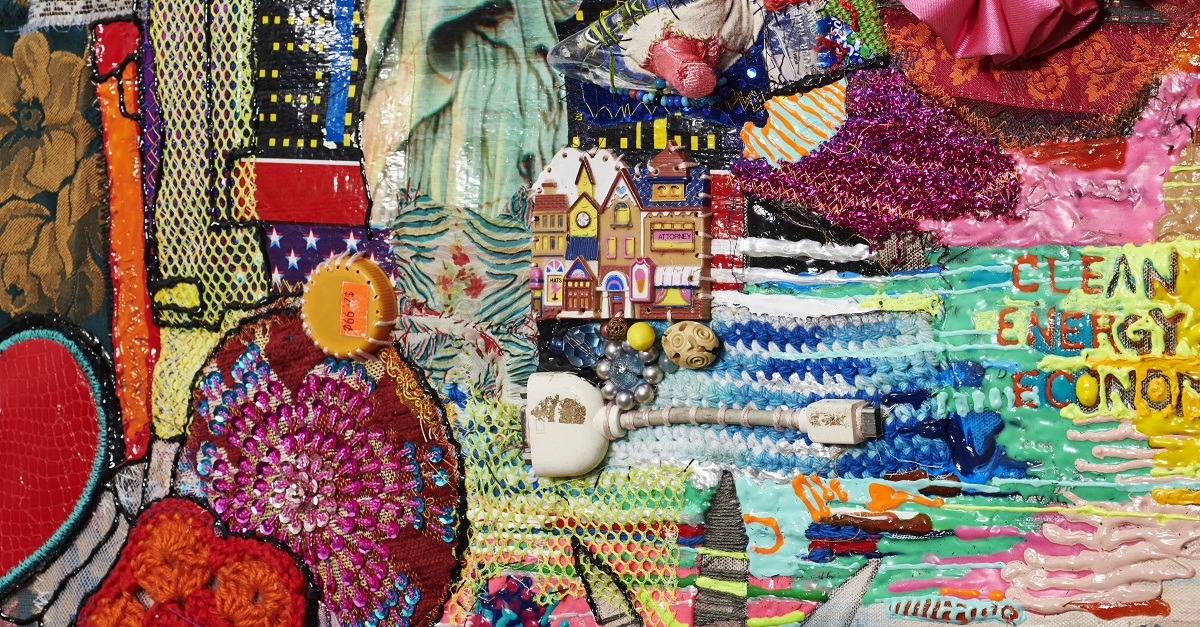
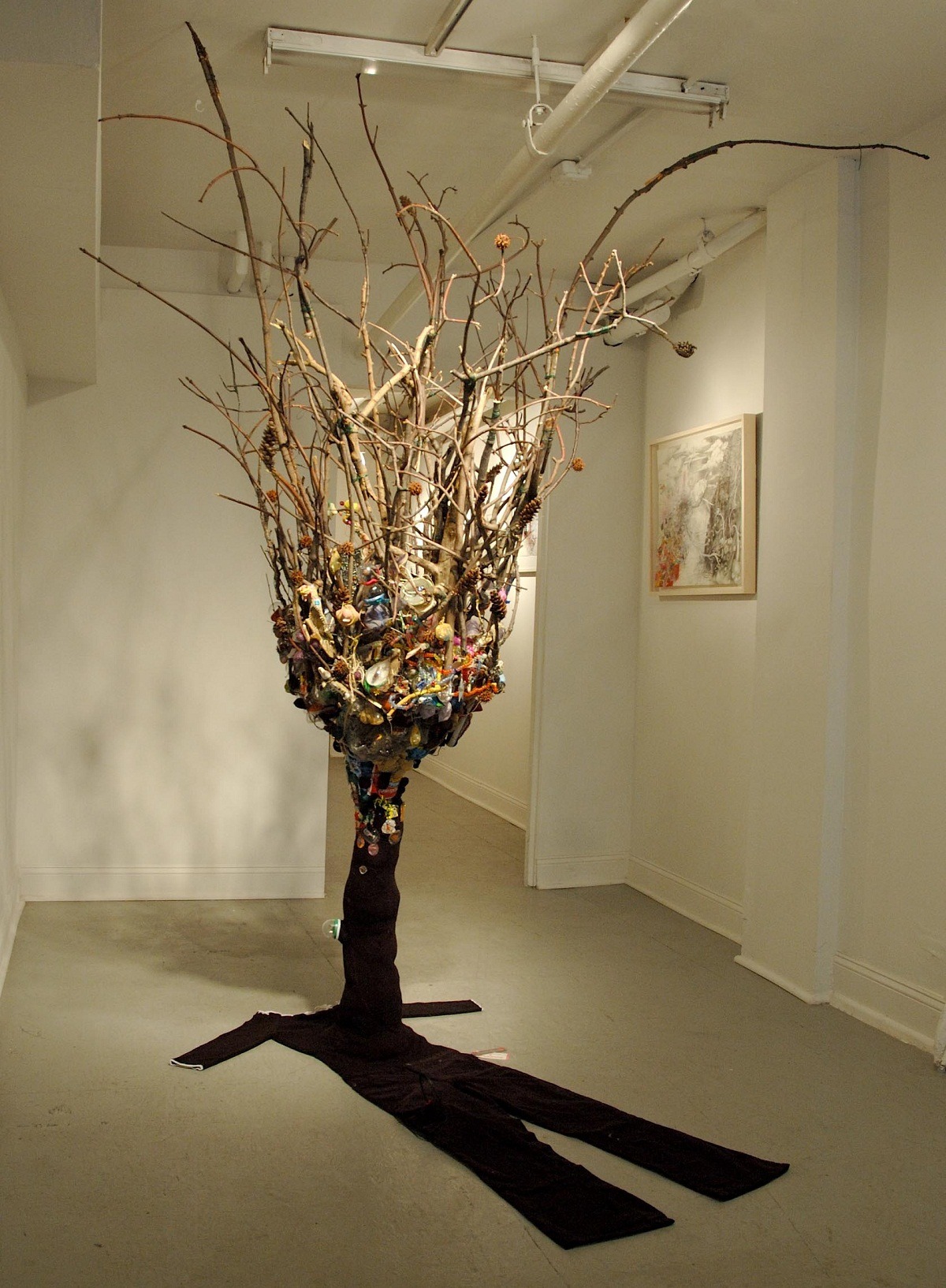
Trying to become more accepting and not overwork pieces through fear
Tell us about a piece of your work that holds particularly fond memories and why?
Several years ago I made a piece called “Trying Not To Die”.
I think about it often and would love to get funding to remake it and install it again. I felt like it spoke of a universal feeling about the human condition and the environment.
It is a tree of sorts. I started with black clothing in my (short) size laid out flat on the floor. A tree trunk emerged out of the stomach area. This was made out of the same black sweater fabric. Five foot high real branches spread out from this, with attached pieces of a gumball machine, spherical plastic toy holders and other plastic junk embellished with painted patterns. The branches extend out in all directions, including up to the ceiling.
Unfortunately a couple of years ago this piece was damaged by mice who nested and died in it, while it was stored in my garage. It was pretty disgusting to clean up and I’ve always wanted to remake this piece, but make it better.
I’d love to have a whole forest of trees with several of their branches attached together.
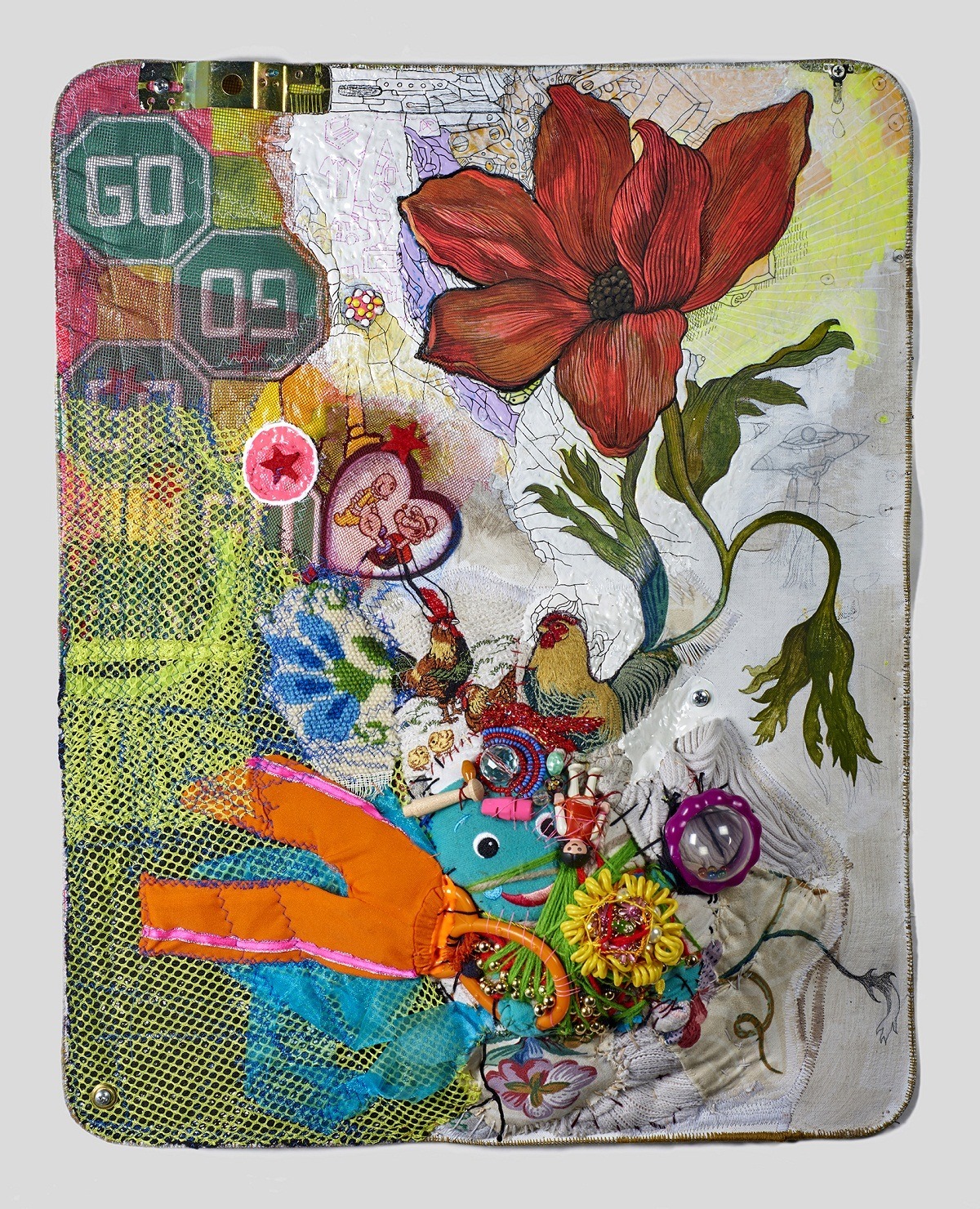
How has your work developed since you began and how do you see it evolving in the future?
I’ve always been a maximalist, intent on combining as many of my materials, processes and ideas together as possible into each piece.
However, lately, I’ve been thinking about getting more minimalist in my work. Being a maximalist can be tiring. It would be nice to learn to stop at that first fresh stage before I overwork a piece.
Something always compels me to keep going until occasionally, I ruin a piece. Then I have to bring it back and often cover up much of the labour-intensive work I have put into it.
I wonder if this relates to some larger issue in my life where I never quite feel like my first impulse is enough. Maybe if I can get myself to stop at the first stage of a piece it will be symbolic of a larger ability for me to accept myself more easily.
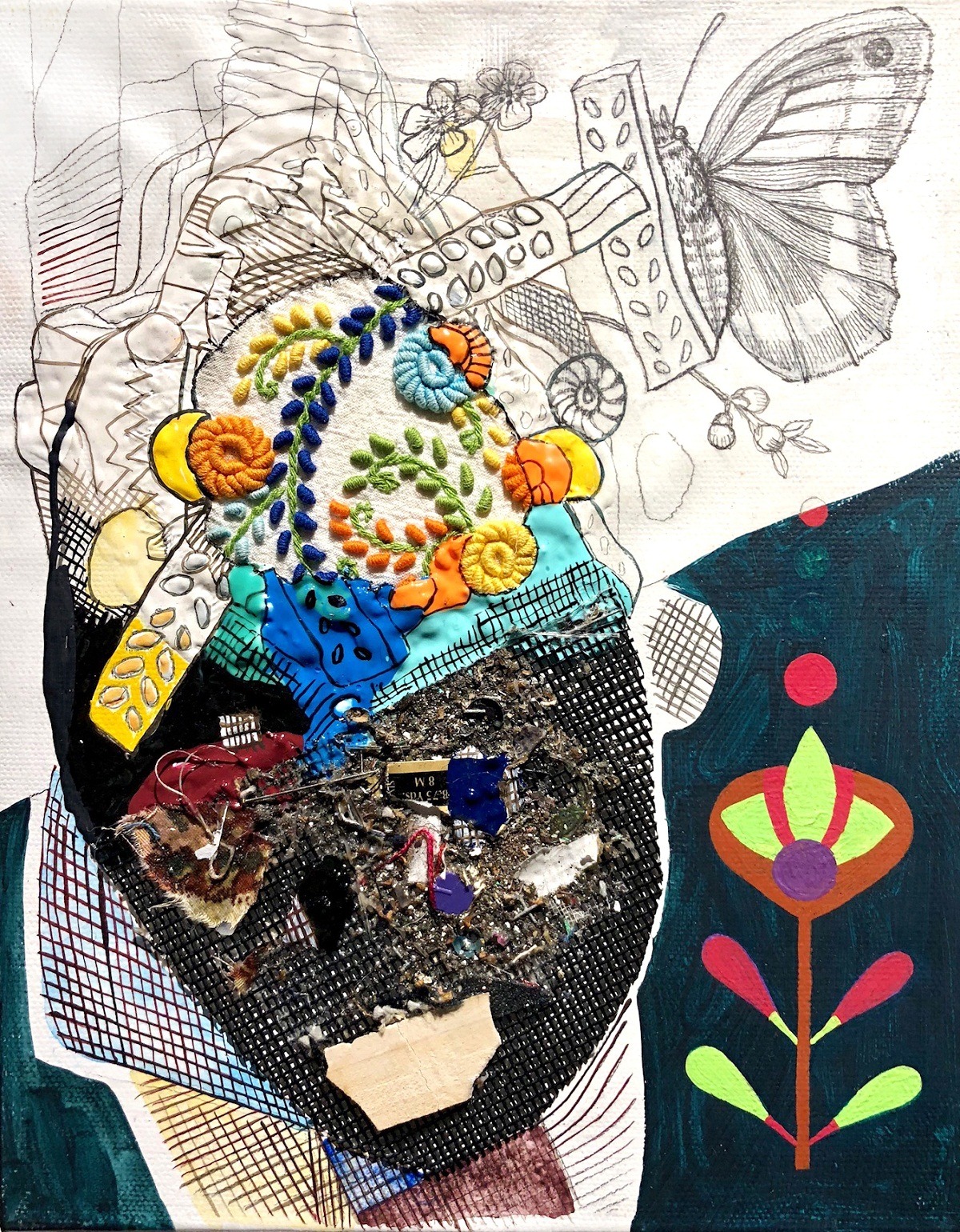
What advice would you give to an aspiring textile artist?
Never let the statement (or non-statement) that “textiles are not art” pass. Accept that if you are using thread and fabric, especially if you are a woman, biases are going on behind the scenes. They have been there for centuries – even though it seems ridiculous that this could still be happening in the modern world. Be assertive about your work.
Develop your network of contacts and learn business skills.
Avoid living your life out as a script that you learned as a child or from society. I lived the ‘artist’ and American Dream myths for years; the idea that if you are talented and hardworking you will automatically become rich and famous. Don’t assume that just because you work hard and you are talented you will “make it”.
Try to figure out what it means to you to “make it”. What is your personal definition of success?
I was taught to follow my bliss but learned nothing practical in the process about how to run a business and make a living out of my work. It has really been a stumbling block for me. As an artist, you are also a business person. There is no way around this unless you are already independently wealthy or have a life-long patron.
Work out what you want to achieve and use your network, contacts and business skills to assist you.
For more information visit www.juliepeppito.com
What do you think about this artist’s colourful work and the messages behind it? Let us know by leaving a comment below
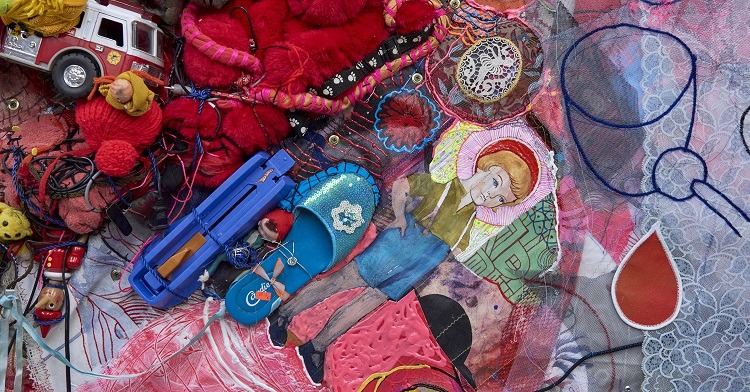
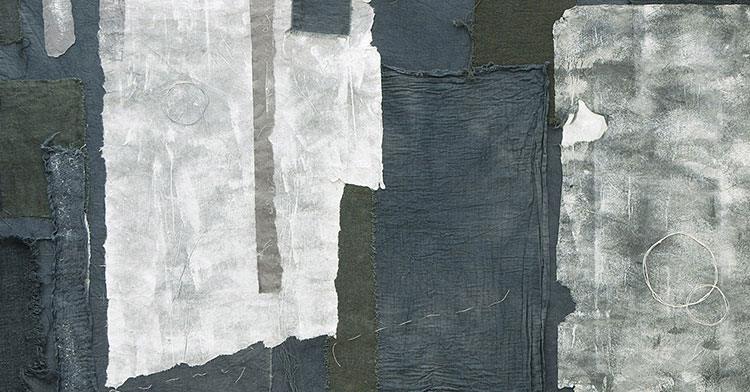
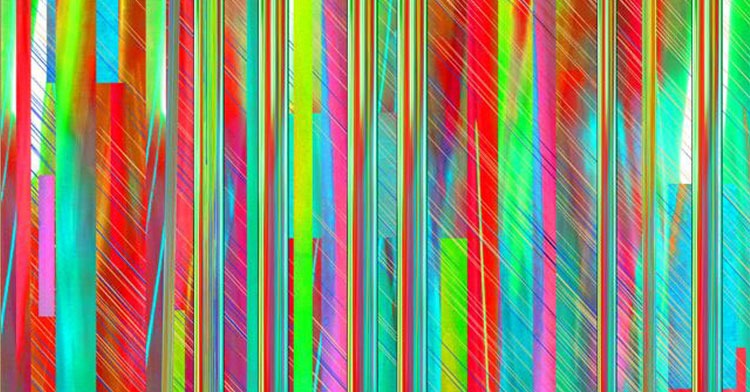
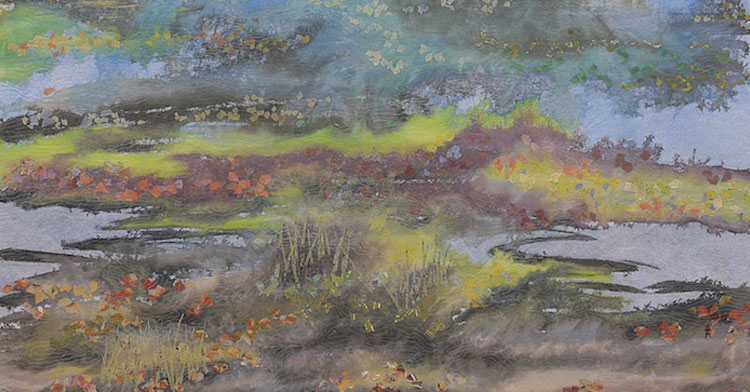
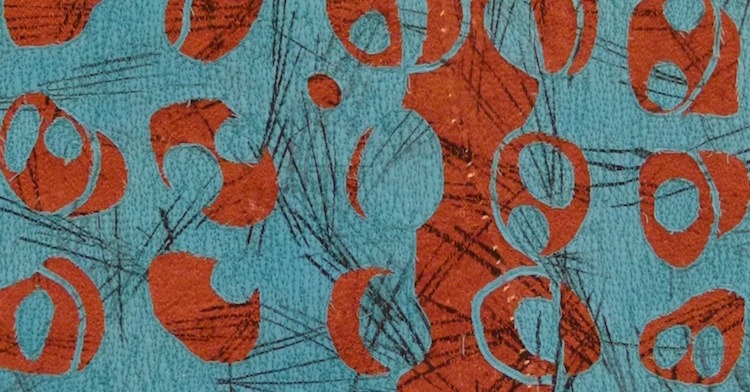
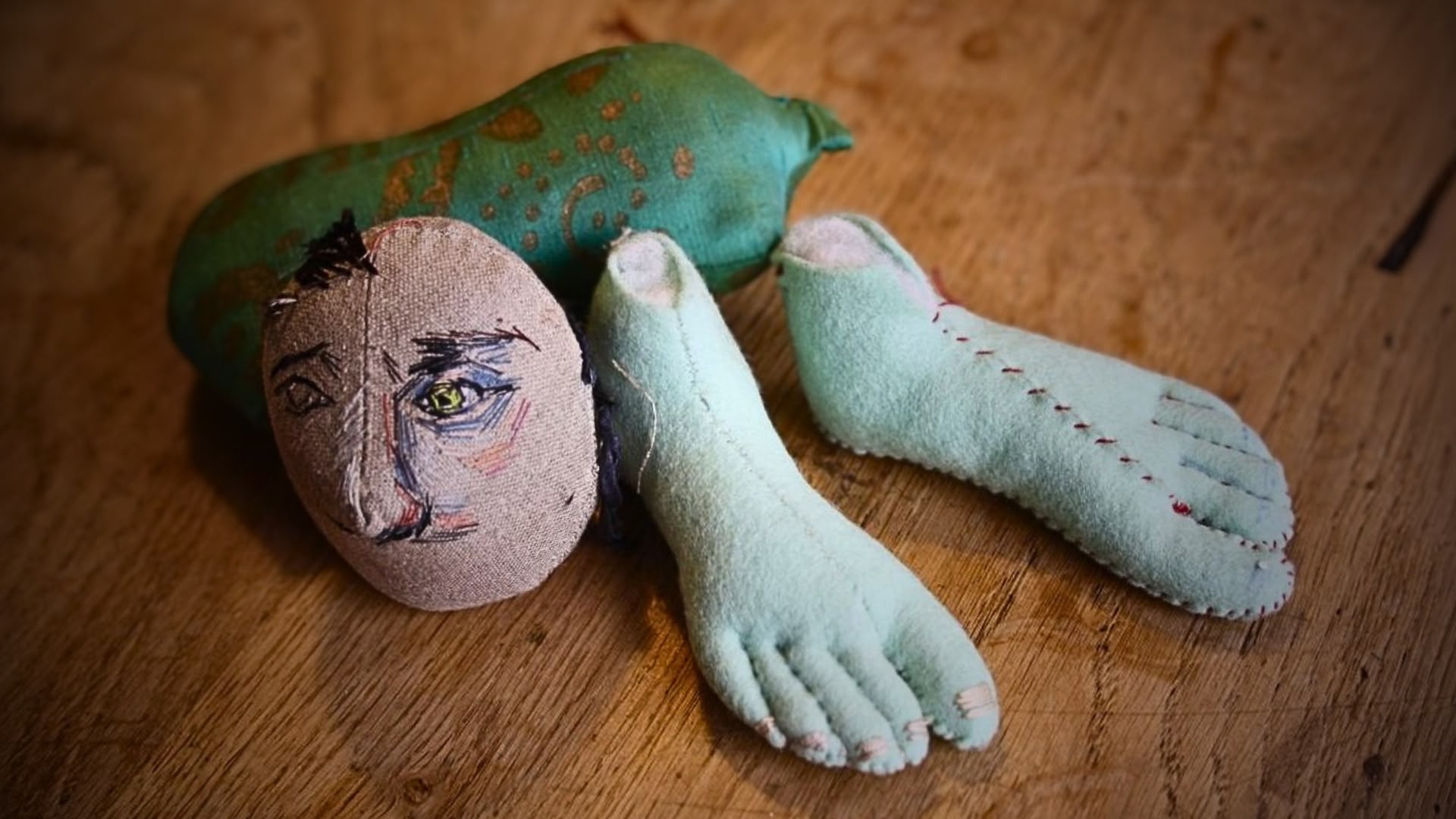
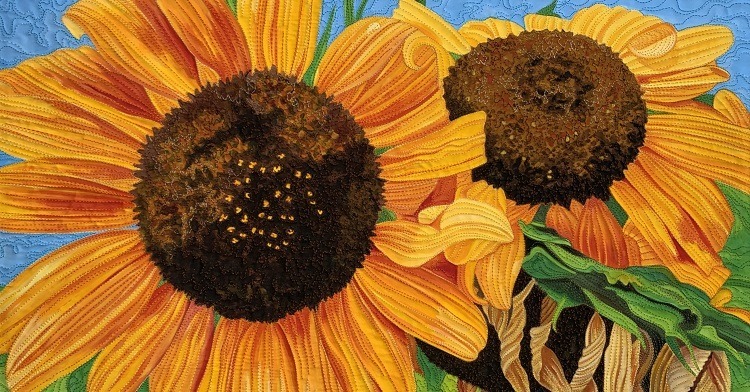
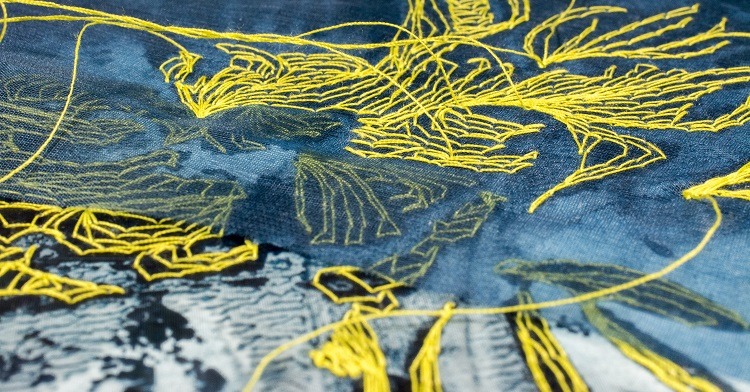
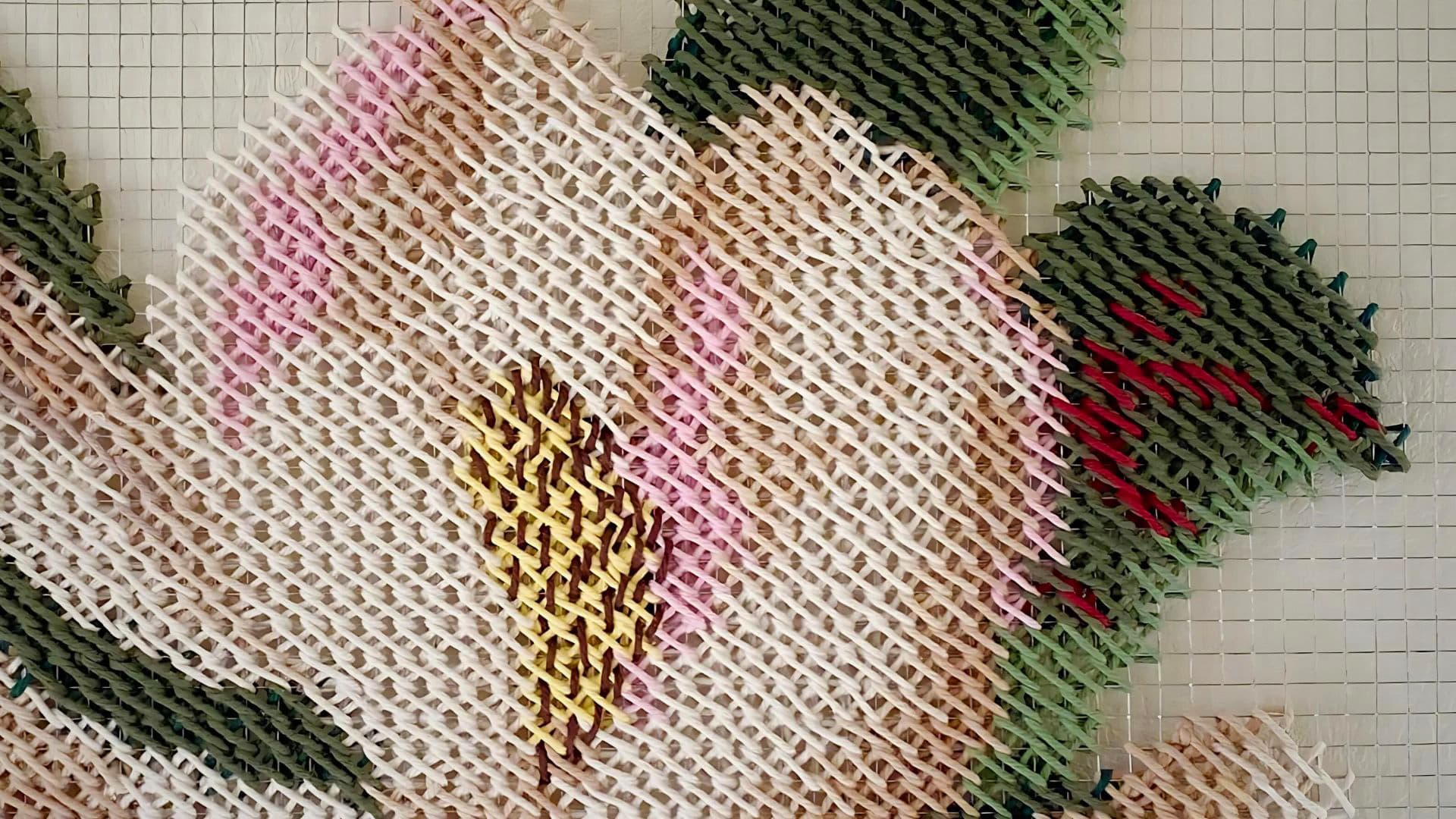
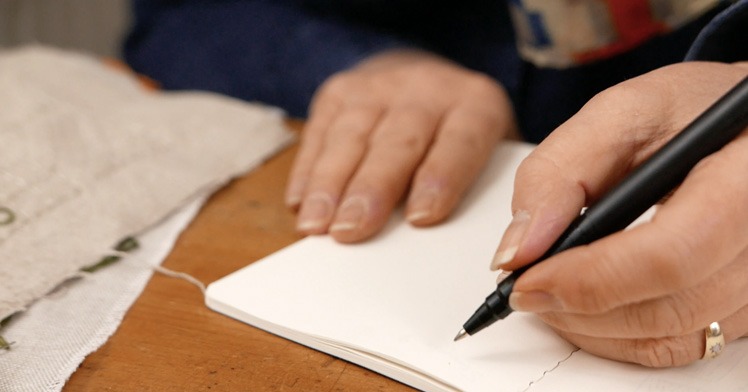
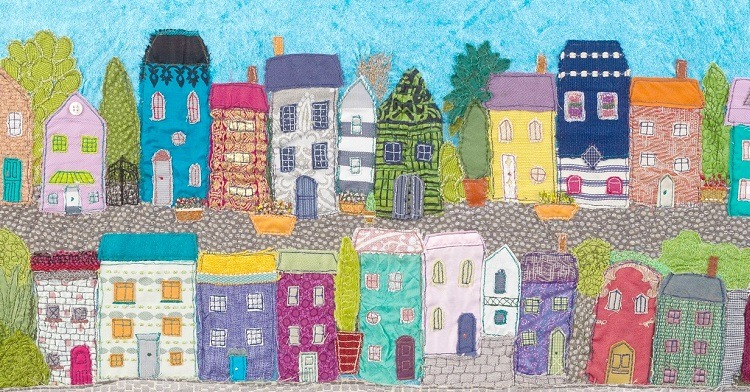
6 comments
Kathleen Wolff
I am thrilled and excited learning that there are other artists with the crazy approach to textile art that I have begun exploring. I just finally dug into my many years worth of fabric, paint, broken toys, etc… And created a tapestry for part of our music room ceiling. It tells a story of part of the life my husband and I have shared…. Focusing on the Pacific Northwest. When he and our son put the 14 foot piece up across the room…tears of joy and awe came to my eyes and a grin from ear to ear. I had not yet seen it all at once…from a distance I amazed myself with what I have created… And am so happy to know I will do more!
Alex Schofield
Very honest commentary and fantastic advice from an artist who has gone through many hoops. I also agree that “textile” based art can still be ghetto-ized. I was once at a public function where a man asked me what I did. I said I was an artist, mainly working in textiles. “That’s a nice hobby,” he said, and walked away. Sites like textile artist highlight the many artists working in textile-primary mediums. Bravo!
Mercy Rojas Arias
Tremendamente inspiradora!!! Julie Peppito ha dado uno de los más claros consejos para una artista textil: “Calcule lo que desea lograr y use su red, contactos y habilidades comerciales para ayudarlo.” Es muy importante aprender habilidades comerciales para poder tener el arte como forma de vida. Gracias por estos magníficos artículos.
Jollicool
I find Julie Peppito’s work very thought provoking and liberating.
I’m fascinated by her working method, and totally relate to the ‘tidying’ days before starting.
She very skilfully combines many methods and creates fascinating pieces.
I’m inspired!
Ashley Rodriguez Reed
Wow, incredibly inspiring and amazing grounding advice. Loved reading and love the work!
Alyson Vega
What a fabulous and inspiring article! I am so impressed by Ms. Peppito’s work. I can relate to her maximalist tendencies. I am also very excited to see an artist featured on your site who does not fall into a specific category. Bravo to you and to the artist!